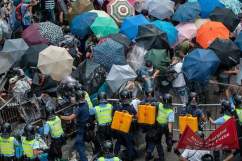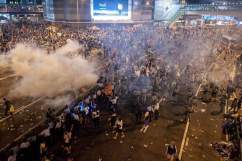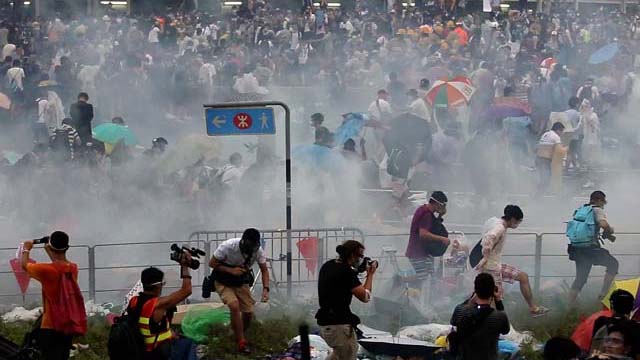
(AFP PHOTO / AARON TAM)
Right now in Hong Kong, pro-democracy students are in a tense standoff with police. Here’s what you need to know about the protests.
1. Hong Kong is an Autonomous Region of China
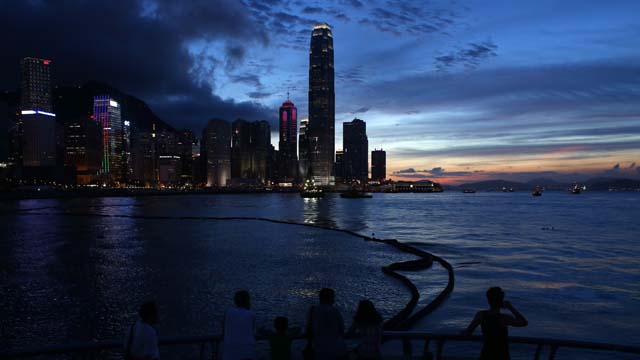
(AFP PHOTO / DALE DE LA REY)
To fully understand the current situation in Hong Kong, one has to take a look at Hong Kong’s history.
Under Chinese law, Hong Kong is not just a city but a Special Administrative Region of the People’s Republic of China, also-known-as an autonomous region. An autonomous region is a part of a country that has a certain level of autonomy, or independence from an external authority. In Hong Kong’s case, this means independence from Beijing, the country’s capital.
Hong Kong gained its Special Administrative Region status in 1997 after it was turned over to the People’s Republic of China by Great Britain, who had ruled it as a Crown colony since 1842.
Because of its British influence, Hong Kong developed a different political system than mainland China. Hong Kong is capitalist, while mainland China is communist. When Britain gave Hong Kong back to the People’s Republic of China, the stipulation was that Hong Kong would keep its current, capitalist political system intact for 50 years.
The policy was known as “One Country, Two Systems.”
2. Beijing-Vetted Candidates & the 2017 Election
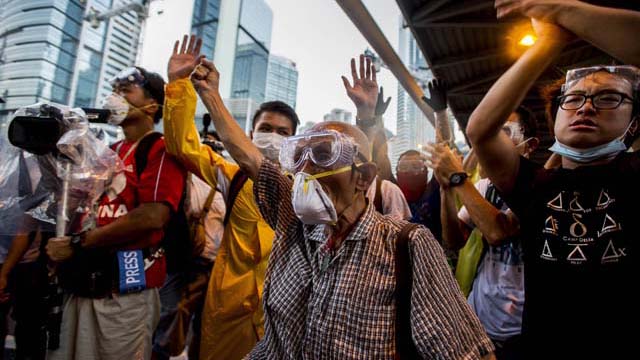
(AFP PHOTO / XAUME OLLEROS)
The current situation in Hong Kong began when it was announced this summer that for the first time, Beijing would let the Hong Kong public vote for the city’s chief executive, the region’s top civil position, in 2017. But that Beijing would only accept candidates it had vetted
This did not resonate well with residents in capitalist Hong Kong who saw this as a breach of the “One Country, Two Systems” agreement.
Below is a graph by Hong Kong University showing how Hong Kong residents are falling in belief that Beijing will uphold its promise of the agreement.

(Hong Kong University)
3. #OccupyCentral & The Umbrella Revolution
As teargas fired on protestors in Hong Kong (pic by @Reuters Bobby Yip) #London stands in solidarity. #OccupyCentral pic.twitter.com/U8hRcAN3D8
— Sara Firth (@Sara__Firth) September 28, 2014
The protests began last week with students and came to a spearhead this weekend when participants took up occupancy of government buildings and the city’s financial district.
Pro-democracy groups [moved] to disrupt the city’s Central financial district — where many big banks and other businesses are located — in a campaign known as “Occupy Central.”
Occupy Central began formally on Sunday, with thousands of protesters, many wearing eye and clothing protection, beginning a sit in around government buildings. Supporters want to force discussions, and even concessions, over Beijing’s influence on Hong Kong.
The protesters are calling it the “Umbrella Revolution” because they are using umbrellas to deflect tear gas attacks by police.
4. Riot Police Responded
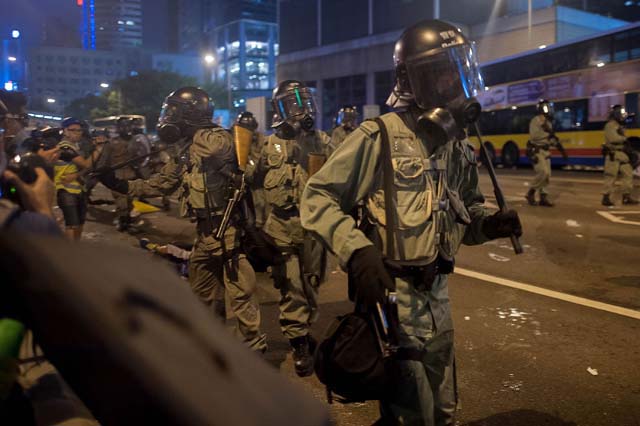
(Photo by Anthony Kwan/Getty Images)
Police responded to #OccupyCentral with pepper spray and tear gas.
According to the New York Times:
In a significant escalation of their efforts to suppress protests calling for democracy, the authorities in Hong Kong unleashed tear gas, mobilized riot police with long-barreled guns and closed a subway station Sunday to disperse crowds that have besieged the city government for three days. But thousands of residents wielding only umbrellas and face masks defied police orders to clear the area.
Critics have stated that Hong Kong authorities are overreacting to the peaceful protests.
But Hong Kong has gone on record that pepper spray and tear gas was just the beginning and that if protesters don’t go home, “officers would use a higher level of force.”
5. Beijing is Trying to Blackout Hong Kong
BREAKING: @instagram users in Mainland China say they find Internet access to @instagram was blocked after Hong Kong #OccupyCentral @OCLPHK
— George Chen (@george_chen) September 28, 2014
yup, I can confirm that RT @george_chen: BREAKING: @instagram users in Mainland say they find access blocked after Hong Kong #OccupyCentral
— Libdave (@libdave) September 28, 2014
To help squash the revolution in Hong Kong, it’s being reported that Beijing has shut down access to various social media clients like Instagram to those in mainland China so they cannot know about what’s happening in Hong Kong.
